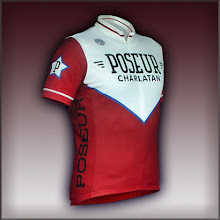This road, Shankle Road, has no lane markings and is about 16 feet wide. It is so narrow that when a motorist encounters oncoming traffic, he naturally maneuvers his vehicle to the right side of the roadway, and even puts the right tires onto the verge.
After a while, I am approached by opposing direction traffic. The immediate question arises; How does a bicyclist conform to the law when there are no lane markings? How far right must I go when yielding to same-direction and opposing traffic? Motor vehicles straddle the edge of the road, must I leave the paved portion of the road as well?
OPERATION ON ROADWAY. Sec 551.104
(a)A person operating a bicycle on a roadway who is moving slower than the other traffic on the roadway shall ride as near as practicable to the right curb or edge of the roadway, unless:
(3) a condition on or of the roadway, including a fixed or moving object, parked or moving vehicle, pedestrian, animal, or surface hazard prevents the person from safely riding next to the right curb or edge of the roadway.
But that seems to be referring to making way for overtaking traffic, and that doesn't guide me for opposite direction traffic. It rules out leaving the paved portion of the roadway though, thank goodness.
I must rely on non-bicycle specific ordinances, that is, the same rules that guide motor vehicle operators, in order to see where I am allowed to lawfully position myself in the lane.
Sec. 545.051. DRIVING ON RIGHT SIDE OF ROADWAY.
(a) An operator on a roadway of sufficient width shall drive on the right half of the roadway
(b) An operator of a vehicle on a roadway moving more slowly than the normal speed of other vehicles at the time and place under the existing conditions shall drive in the right-hand lane available for vehicles, or as close as practicable to the right-hand curb or edge of the roadway
Since the language for motor vehicle operators is exactly the same for cyclists, I should be able to claim the same space on the public way that a motorist would naturally use in the same situation. The law grants at least the width of a standard automobile from the edge of the roadway to where the left tire would run. A cyclist has a right to that space on a narrow road with no lane markings, even in the presence of traffic from either direction. A cyclist claiming that space would not be "impeding traffic".
How would the far-to-right rule be applied to a bicycle driver on a laned road? If cyclists have all the rights and duties of motor vehicle operators, then we have legal access to the same portions of the public way as they do unless otherwise restricted by Sec 551.004.
For example, cyclists are restricted from operating in the left lane of multiple laned roads unless we are preparing to turn left. This conforms with the slow moving vehicle rule, and is somewhat of a redundancy in the code.
When I quoted sec 551.104 above, I left out some of the exceptions of the far-to-right mandate, because they, by their nature, do not apply to unlaned roadways. Here are those exceptions:
"...shall ride as near as practicable to the right curb or edge of the roadway, unless:
(1) the person is passing another vehicle moving in the same direction; (2) the person is preparing to turn left at an intersection or onto a private road or driveway;
(3) a condition on or of the roadway, including a fixed or moving object, parked or moving vehicle, pedestrian, animal, or surface hazard prevents the person from safely riding next to the right curb or edge of the roadway; or
(4) the person is operating a bicycle in an outside lane that is:
(A) less than 14 feet in width and does not have a designated bicycle lane adjacent to that lane; or
(B) too narrow for a bicycle and a motor vehicle to safely travel side by side."
So if any one of those conditions exist, (1, 2, 3, 4A or 4B) the cyclist is relieved of the duty to "ride as close as practicable to the right edge of the roadway". And if the conditions described in exception 4A and 4B are present, the cyclist may legally occupy any portion of the lane as he so chooses, from the left edge to the right edge.
While Texas may be able to boast of roads with lanes wider than 14 feet, there aren't any that I have found here in my neck of the woods. But if I were to find myself on such a road, the far-to-right rule does not compel me to ride any closer to the edge than the width of a standard automobile. Nor does it compel the cyclist to operate closer to parked cars than the width of a standard automobile.



No comments:
Post a Comment